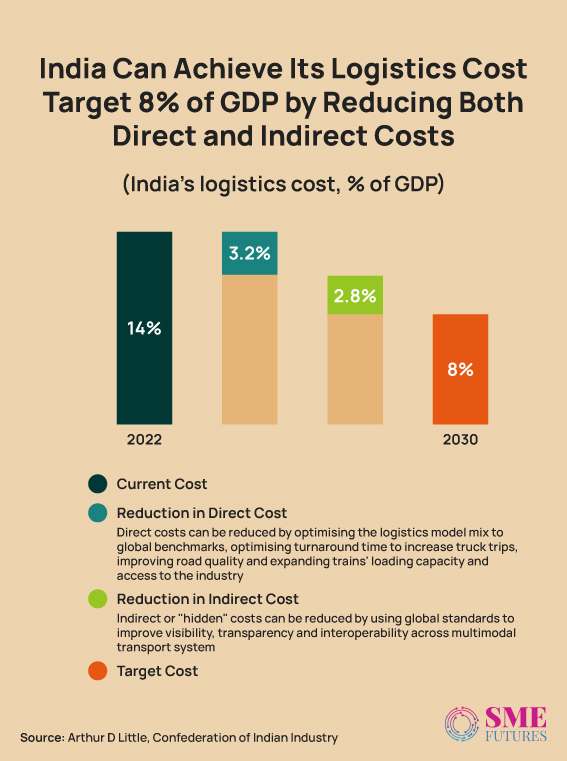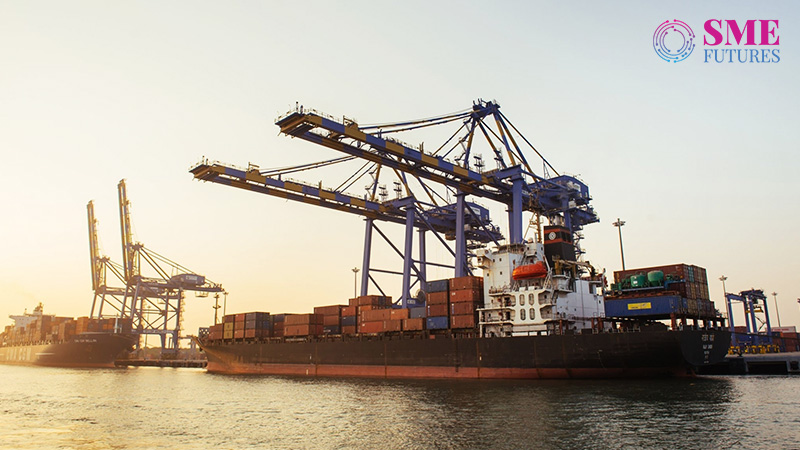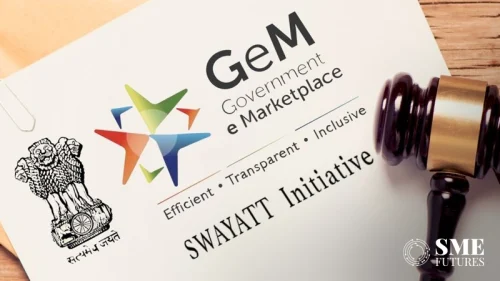Logistics is crucial for economies. It frequently acts as a major index, allowing us to see where the market is heading.
Since 2015, India has undertaken several steps to increase its logistics efficiency. According to logistics sector veteran, Yogesh Dhingra, Founder & CEO, Smartr Logistics, the sector is shaping up to be a true sunrise sector.
“India’s logistics sector is expected to grow at a 9 per cent CAGR over the next 5 years. With ever-changing consumer preferences and increased demands for quick delivery services, logistics is rapidly transforming into a dynamic industry with the express logistics sector expected to outperform at a 23 per cent CAGR,” he says.
Rahul Pillai, Founder and CEO, Hybrid Shifting Solutions India Pvt. Ltd. (HSSIPL) says that this growth will be driven by vigorous credit disbursal and capital investment cycles, which will strengthen the balance sheets of both the corporate and banking sectors.
“Additionally, the expansion of public digital platforms and the implementation of key initiatives such as PM Gati Shakti, the National Logistics Policy, and production-linked Incentive schemes will further support economic growth by boosting manufacturing output. Overall, these factors contribute to a positive outlook for the logistics sector in the upcoming fiscal year,” he comments.
But the sector lags
However, India is far behind its international peers in terms of the Logistics Performance Index (LPI). In LPI 2023, India ranked 38th out of 139 countries, a slight improvement from its previous ranking of 44.
But it’s not enough for India inc, because the logistics market drives the Indian economy.
To start with, India currently spends 13-14 per cent of its GDP on logistics costs, compared to the global average of around 8 per cent of GDP. This has created a competitiveness gap of $180 billion in 2020 that will widen to $500 billion by 2030.

There are hidden costs
Logistics expenses account for 60 per cent direct costs (including transportation, warehousing and value-added services) and 40 per cent indirect costs (including inventory carrying costs, theft, damages, and losses in transit).
In comparison, the average indirect cost in industrialised countries is just 10 per cent.
Inadequate demand forecasting and a lack of technological adoption result in inventory mismanagement, increasing indirect costs. It also leads to longer average inventory days (33 days in India versus 24 worldwide) and higher inventory carrying costs, which include costs for holding and storing unsold items.
Pillai feels that the high costs in this sector are a hinderance. He attributes it to factors like inadequate infrastructure, poor road connectivity and congested ports.
Congestions due to poor road conditions within cities lead to low average speeds and idle time for reduced efficiencies at the first and last mile.
“Complex regulatory procedures, including paperwork and compliance requirements contribute to higher costs. Additionally, hidden costs such as inventory holding, pilferage, and suboptimal packaging, further impact the sector’s cost-effectiveness,” he says.
According to Dhingra, the high costs are due to the unbalanced logistics modal mix that is heavily dependent (~64-66 per cent) on road transportation. “This is further hindered by India’s fleet types which are skewed towards smaller 16–25-ton trucks which are less cost effective,” he says.
Other reasons include poor productivity of pickup and delivery agents due to inaccurate addresses, unavailability of COD, consignee not available, etc. These lead to a lower first attempt delivery strike rate (FASR) than the global benchmark, leading to a higher last mile cost. Certain express players are working on next day or same day delivery offerings which can lead to a higher FASR through efficiency at the first and mid-mile.
“Some other causes that often go unnoticed are local government regulations which are good in their aim to support minimum wage but can also be misused by people that are not on the payroll of the logistics organisation but demand wages in industrial areas. This can lead to additional costs to the logistics company over and above the costs of their full-time employees,” Dhingra mentions.
Hidden costs are further accentuated as the sector is fragmented and dependent on various unorganised players. This can lead to a lack of transparency or collaboration which further increases the cost.

Global standards can aid in cutting costs
The government aims to bring down the logistics cost to GDP to 7.5 per cent from the current 13 per cent.
According to a whitepaper by GS1, ‘Unlocking the potential of Indian logistics sector’, it is only possible when the sector can work on optimising the logistical modal mix as per the international benchmarks.
It says that 25-30 per cent allocation to roadways, 50-55 per cent allocation to railways, and 20- 25 per cent allocation to waterways, can reduce direct costs.
Furthermore, optimising turnaround time to 700-800 Km per day can increase truck trips by 50 per cent.
Expanding freight loading capacity and increasing industry access while increasing freight trains’ running speed to 50 Kph will also help. Implementing efficient inventory management and monitoring systems can reduce indirect costs, optimising systems and processes to make them more efficient and aligned with global benchmarks.
“By adopting internationally recognised best practices and benchmarks, such as harmonised customs procedures and advanced technologies, the logistics sector can enhance operational efficiency, transparency, and coordination. Global standards provide a framework for improving processes, driving innovation, and streamlining operations to achieve cost savings and better competitiveness,” Pillai says.
Dhingra too strongly advocates the adoption of global standards to reduce logistics costs and improve efficiency in the next 5 to 10 years.
“The Indian government as well as the logistics players are looking at global best practices as well as home-grown new age solutions to improve the sector’s performance which will certainly cut down unnecessary costs,” he comments.
Furthermore, government initiatives such as the National Logistics Policy (NLP) and the Gati Shakti initiative will lead to a holistic infrastructure network such as multimodal connectivity and logistics parks, dedicated freight corridors, ports, air cargo terminals, and better road connectivity, which will help in reducing the overall costs.
“Technology initiatives and digitisation of processes such as the Unified Logistics Interface Platform (ULIP), the E-Way bill, and e-Sanchit will allow for seamless visibility and regulatory clearance and certifications for optimised performance,” he adds.

What global standards does India need
The logistics sector is a sunrise sector with tremendous potential and a bright future. Experts believe that following global standards can help it to streamline itself.
“Harmonised customs procedures that simplify import/export processes, adoption of technologies like IoT and blockchain for enhanced visibility and automation, warehouse management systems for efficient inventory management, and collaborative platforms to enable seamless integration among stakeholders. These standards will ensure our alignment with global best practices, leading to improved efficiency and reduced costs,” Pillai points out.
As per Dhingra, following global best practices such as dignity of labour, time management and appointment discipline, self-collection, etc. can enhance the sector.
“Creating a well-trained workforce linked with industry requirements by providing the finest occupational standards to increase labour dignity will attract a more educated workforce. Better treatment of our pickup/delivery personnel, as well as of those in operations, will also attract additional talent to this field,” he says
“Major commercial buildings and malls in India require logistics infra such as service lifts, service entrances and loading docks, which will facilitate efficiency operations and increase productivity. Infrastructure for parcel lockers and kiosks in high-traffic public spaces can increase efficiency, reduce failed delivery attempts, and provide more options to the consumers as per their convenience,” he further says.
Besides that, adhering to delivery timeslots at warehouses can play a major part in reducing last mile costs. “Vehicles and personnel can be held up for hours or even days to complete single deliveries which can be avoided with advanced planning and adherence to commitments,” says Dhingra.
Lack of visibility regarding suppliers and routes has caused delivery issues for some logistics companies, which ultimately impacts the entire value chain and delays manufacturing. To enable businesses to de-risk supply networks, prevent price increases due to scarcity, and ensure ongoing supply, more significant supply chain visibility is required.
Meanwhile, if we talk about automation, India is still at the very beginning of the process. “Globally, businesses have embraced cutting-edge technology to provide complete transparency and real-time data on supply chain activities,” he adds.
Furthermore, the Industry 4.0 trends are transforming supply chains globally by helping organisations build agile networks, use disruptive technologies, ensure end-to-end visibility, and better manage risk. These best practices have the potential to ameliorate the Indian supply chain and help the nation in adopting cutting-edge technologies at a quicker pace.
Now for SMEs, adopting these global standards is quite a daunting task. However, industry sources feel that this is not impossible. They can adopt these practices by building awareness through training programmes and industry associations, says Pillai.
The MSMEs in the sector can also collaborate with larger logistics service providers or industry networks to leverage their expertise and resources. Accessible financing options tailored to SMEs’ needs can help them invest in technology upgrades and infrastructure improvements. Coping with challenges requires proactive engagement, embracing technology, improving skill sets, and seeking opportunities for partnerships to achieve economies of scale.











